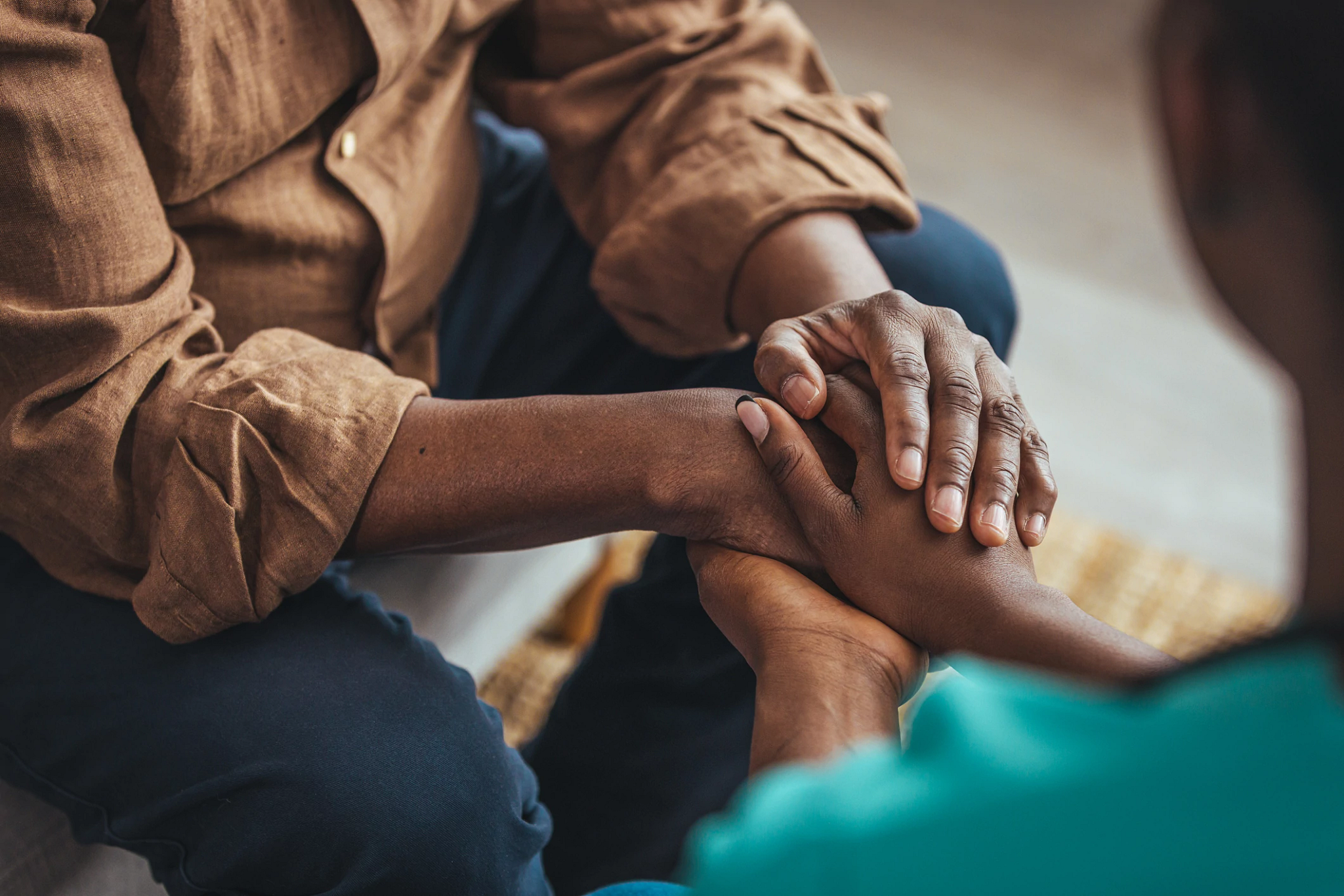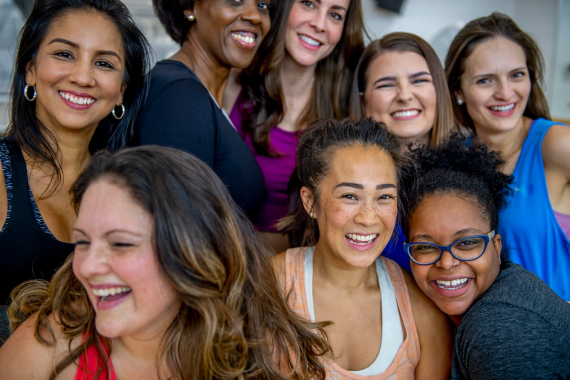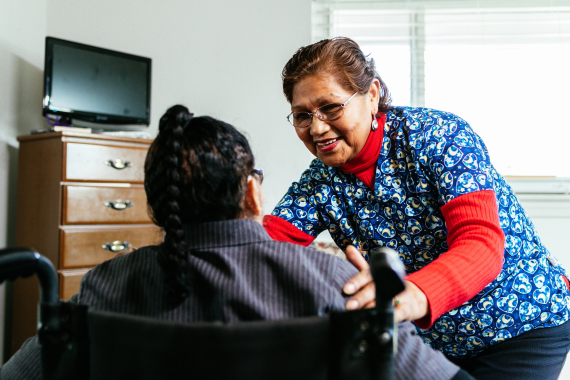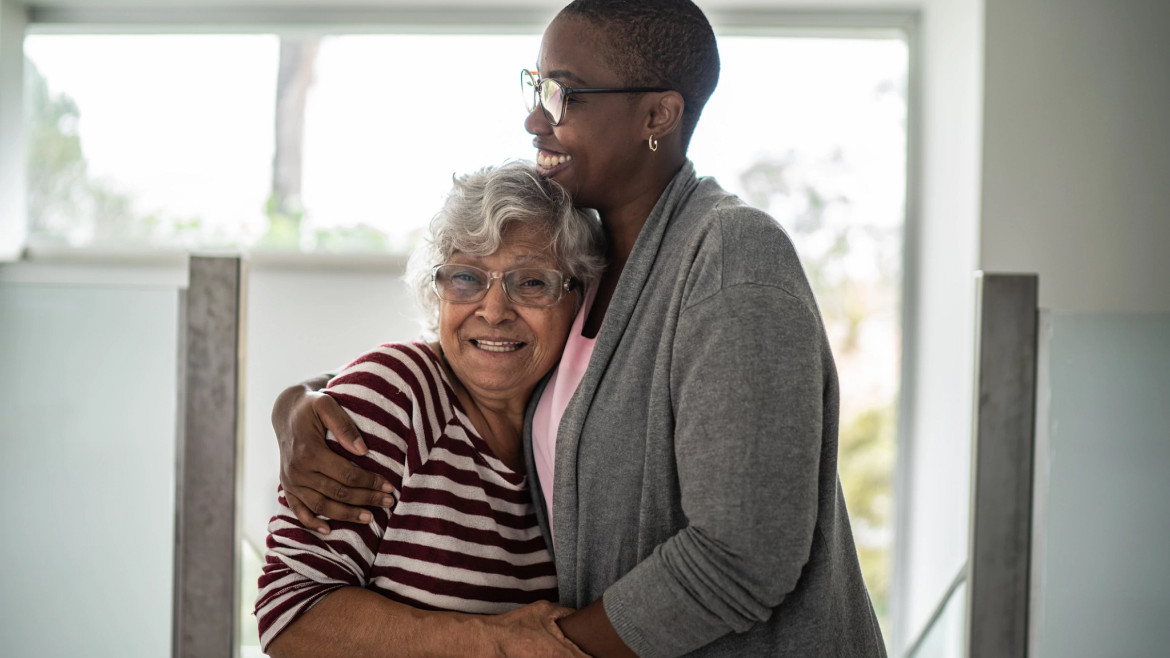What is Care Work?
Care work (sometimes called domestic work or labor) encompasses various services that caregivers provide to support another person’s needs related to age, disability and illness. Care work may be paid labor, or unpaid labor provided by family members. Common types of care work include child care, early education, and home- and community-based services for people with disabilities or older adults.
The policies that enable the robust provision of care work are known as the care infrastructure. This infrastructure includes paid family and medical leave, accessible and affordable child care, well-supported home and community-based eldercare services, and fair pay and labor protections for care workers.
The demand for care work has grown exponentially since the start of the COVID-19 pandemic and will keep growing as the U.S. population ages. While these services are essential to society, care workers have fewer legal protections, lack access to adequate support and are paid less than workers in other labor sectors.
Did you know?
85%
Of home care workers are women. With inconsistent work hours, home care workers typically earn $16,100 annually. (Source)
Quote from Stacy Schusterman
We cannot achieve racial, gender and economic justice without changing our policies and business practices to support caregivers and care workers with better pay and benefits, including paid leave.”![[field.profile-image-alt]](/sites/default/files/styles/media_library/public/acquiadam/2022-07/StacySchusterman.png?itok=GsoM1-zV) Chair, Schusterman Family Philanthropies
Chair, Schusterman Family Philanthropies
Care Work Throughout History
The undervaluation of care work is rooted in America's history of slavery and disenfranchisement.
Patriarchal beliefs about women’s rights, abilities and responsibilities have significantly limited lifestyle and employment options for women of all races throughout much of history. Society has regarded women as responsible for bearing and rearing children and taking care of the home—duties considered natural expressions of women’s caring nature. Because of this stereotype, care work is often considered an expression of love rather than a form of labor warranting compensation. In truth, it can be both.
In the 1930s, the legacy of slavery and racism further devalued Black and immigrant women’s labor. Congress excluded protections for domestic and farm workers—who were almost entirely Black—from the Social Security Act, minimum wage laws and overtime laws passed with the New Deal.
Today, while women of all backgrounds continue to occupy the majority of caregiving roles, Black and Latina women make up 41% of paid caregivers. Unpaid caregiving also falls disproportionately on women, contributing to women having less wealth and lower retirement savings and overall net worth than men.
Benefits of Robust Care Infrastructure
Investments in care infrastructure offer significant opportunities to strengthen families and communities and bolster economic equity for women, particularly women of color.
Like any other infrastructure investment, care infrastructure is necessary for a strong economy, empowering economic growth by bringing more care workers into the formal labor sector and freeing up more people to work outside the home.
The International Labour Organization (ILO) estimates that governments would generate nearly 300 million jobs globally over the next decade if all countries offered universal child care, long-term care and parental leave.
deep dive: care infrastructure in the u.s.
In 2021, President Joe Biden signed the American Rescue Plan Act (ARPA) in response to the COVID-19 pandemic. ARPA provided states with $24 billion to stabilize child care, $15 billion to supplement the current child care program for low-income families, and $1 billion for Head Start, an early education program.
Though this short-term funding was not enough to meet the needs of American families, those surveyed reported the outsized impact of elevated access to affordable child care. Workers—particularly low-income women—reported increased ability to work consistently and attend school and training programs.
Current Policy Landscape
There is significant momentum at both the state and federal levels to advance and protect the policies and programs that support care infrastructure. Explore the latest developments below.
2022
- Congress passed the Pregnancy Workers Fairness Act (PWFA), a landmark civil rights law granting over 3 million pregnant workers and millions of postpartum workers reasonable accommodations for limitations related to pregnancy, childbirth and related medical conditions.
- Congress passed the Providing Urgent Maternal Protections for Nursing Mothers (PUMP) Act. The PUMP Act offers expanded workplace protections for employees to express breast milk, such as additional break time and access to spaces shielded from view to enhance privacy.
2023
- The Biden-Harris administration proposed nearly $1 trillion in investments for child care, home and community-based services and paid leave in the administration’s FY24 budget request.
- The Biden-Harris Administration issued a proclamation declaring April as "Care Worker Recognition Month", to honor the work of direct care workers, caregivers, early childhood educators, child care workers and more.
- The Biden-Harris administration signed an executive order containing over 50 directives to expand access to affordable, high-quality care and provide support for care workers and family caregivers.
2024
- In Michigan, Senate Bills 790 and 791 were signed into law, restoring union rights for care workers and strengthening the state's care infrastructure.
- Georgia’s 2024-2025 state budget was approved to increase funding for Home and Community-Based Services, paving the way for higher wages for care workers.
- Care in Action's 'Get Out the Vote’ efforts contributed to at least three notable care champion candidates being elected in 2024.
Ongoing
- Thirteen states and Washington D.C. have passed paid family and medical leave as of December 2024. Additional states, including Mississippi and Alabama, have introduced paid leave to all state employees.
- Twelve states and several cities have passed the Domestic Workers Bill of Rights, and there are ongoing efforts to engage with federal lawmakers to pass the Bill of Rights nationally.
- Care organizations are deeply engaged in protecting Medicaid for families who rely on the program to access care services.

Debunked: Common Myths About Care Work
Myth: Care workers are the same as healthcare workers.
Fact: Although some care workers, such as nursing staff, do receive extensive medical training, care workers encompass many more people such as home and hospital nursing aids; nannies and babysitters; daycare attendants; grandparents who care for their grandchildren; and adults who care for their elderly parents.
Myth: Care work is paid labor in formal workplaces.
Fact: While care workers serve in institutions like hospitals, nursing homes and schools, care work is also performed within the home by family and community members, often without pay.
This work is often considered a “labor of love,” but it is work nonetheless and plays a critical role in our economy.
Myth: Home-based care work requires no skills.
Fact: While many associate care work with being caring, care work is skilled labor. For example, child care workers must know about child development, nutrition and age-appropriate play. Eldercare providers need to talk to doctors about potential medicine interactions and help their clients move in ways that align with physical limitations.
COLLECTIVE GIVING SPOTLIGHT: The CARE FUND
In 2021, we joined other funders to launch the The Care for All with Respect and Equity (CARE) Fund. Together, we invested$50 million over five years to fuel the economy, improve outcomes for kids, promote equity and enable people with disabilities and older adults to live independently with safety and dignity.
By funding collectively with a group of committed donors, we magnify our impact and get closer to our goal of building sustainable care infrastructure that supports us all.
Schusterman's Approach to Care Work
Through our Gender and Reproductive Equity Grantmaking portfolio, we support our partners in building an equitable world in which all women have freedom over their bodies, political and economic power and safety in all aspects of their lives.
Advancing women’s economic power is critical to building an equitable world. To do this, we support and sustain power-building for care workers and organizing for paid leave and child care policies. In doing so, we aim to draw attention to the systemic causes of economic inequity that affect women everywhere. Lastly, we invest in research and narrative change and storytelling that makes care work visible, valued, respected and salient as a political issue.
Organizations Leading the Way
Caring Across Generations
A campaign to make care more affordable and accessible to people of all ages by building the Caring Majority movement, fighting for better state and federal care policies, and building awareness and support through storytelling and cultural organizing.
Family Values @ Work
A network of grassroots groups helping state coalitions educate the public and policymakers about the importance of earned sick days and family and medical leave insurance.
Paid Leave for All
A national campaign of organizations fighting to win paid family and medical leave for all people through policy expertise and research, communications partnerships, and grassroots memberships in the field.
National Women's Law Center
A leading organization fighting for gender justice across issues that are central to the lives of women and girls, especially women of color, LGBTQ people, and low-income women and families.
MomsRising
With more than a million members and over 100 aligned organizations, MomsRising is working to increase family economic security, end discrimination against women and mothers, and build a nation where businesses and families thrive.
National Domestic Workers Alliance (NDWA)
NDWA works to win respect, recognition, labor rights and protections for the more than 2.5 million nannies, house cleaners and home care workers who do the essential work of keeping everyone safe, healthy and comfortable.
RELATED RESOURCES

4 Effective Ways to Invest in Women and Girls Now
Funders at all levels are critical to achieving gender and reproductive equity. Get started with our guide to the most pressing issues to support and the organizations making headway toward change.

Why We Need a Care Infrastructure that Works
A win for care work is a win for us all. Now is the time to change our policies and business practices to support caregivers, care workers and those that rely on care to achieve racial, gender and economic equality.

Invest in Women: A 2023 Call to Action
Only 2% of philanthropic dollars support women and girls. Schusterman's Co-President Lisa Eisen shares how more funders can embrace opportunities to ensure that women can fully contribute their talents and leadership to building a stronger society for us all.


